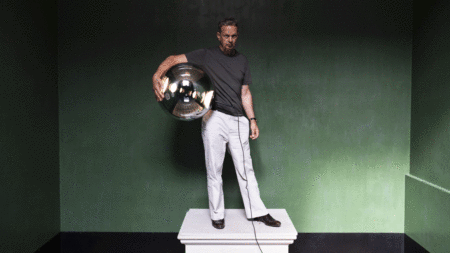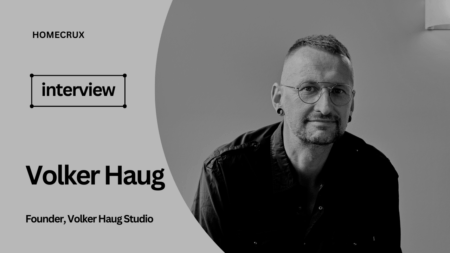There was a point in time when New Zealand had imprinted its image in the international arena as a scenic island nation, harboring its indigenous Maori culture through development, while staying deeply attached to its customs and sports: Haka, Cricket, and Rugby, to name a few. And, that was about it!
Now adding to the impression is cinema; over the past two decades, New Zealand has experienced remarkable growth in its film industry. The credit for this surge in filmmaking on the island nation can be attributed to several actors, directors, and production designers based in New Zealand, who, hailing from various backgrounds, have solidified their legacy on the global stage.
“New Zealand, never had a film industry when I was growing up. Television would have been about it, but even then television wasn’t seen as a sort of a career path per se for me because it offered an unpredictable future,” states Grant Major, New Zealand-based Oscar-winning production designer, who Homecrux had a pleasure to chat with.
But time changes fast, and it changed for the good. In 1978, the New Zealand Film Commission was established, to encourage and promote the national film industry. This gave a platform to Grant Major and many others like him in the budding industry to test their fate. Over the years, the art of filmmaking became so popular in New Zealand that the country, which looked upon Sir Richard Hadley and Martin Crowe as role models, now had new heroes to cheer for. One such hero was the Academy Award-winning production designer, Grant Major.

Born in Palmerston North, Manawatu, New Zealand, Grant enjoyed a fairly normal childhood. “It was no sort of trials and traumas or anything like that. I grew up here in the same city, I’m in now. The city itself has grown to sort of double the size that it was back then.”
“I went to school and then graduated and went to art school after that in Auckland. After art school, I got a job in the local television station as an assistant set designer, and essentially from that time, which is from the mid-1970s, I’ve been doing the same thing for… under 50 years now,” Grant tells us.
The five-time Oscar nominee lives a life that embodies the dream of every retired dad worldwide. He has a suburban house in Auckland, where he lives with his partner Judy. Just like any typical dad, he can be found fixing things, from home appliances to garden equipment. He would even be digging holes, planting saplings, and undertaking various tasks to uphold a certain level of cleanliness in his garden.
When tired of being cramped inside the house, Grant shifts into drive mode and tinkers with his vintage Ford Thunderbird. “It’s a good alternative to the full-on, fairly stressful film life that I have,” he asserts. Luxury however comes at a price, and for Grant, it is to be the absolute best at what he does.
Over the years, Grant Major has contributed his expertise to an array of projects, featuring iconic works such as Peter Jackson’s ‘The Lord of the Rings‘ trilogy and Jane Campion’s ‘The Power of the Dog.’ Admitting a tendency to forget projects as they recede into history, Major vividly recalls certain standout creations.
“I like the interior of the Tower of Isengard from the second film of the Lord of the Rings trilogy. It’s an environment that’s all been carved out of obsidian, like volcanic glass. It was an incredible-looking set displaying an abstract quality that struck me as both unique and groundbreaking at the time.”


“I had a life before Lord of the Rings and then everything changed after the film, like the New Zealand film industry and my profession were taken seriously. Till that point, we’ve been New Zealand designers and New Zealand filmmakers, and as a consequence of Lord of the Rings immense success and subsequently King Kong, we had a really big international profile.”
“I was sort of asked to go overseas and design this, that, and the other. I did go over, but I am also a family guy, raising a child and things like that. And I was more interested in working from New Zealand. If Peter Jackson can work from New Zealand, then I can work from New Zealand too. That was my philosophy.”
“So, by and large, my career has been, based around here. But, it’s been great to have been part of the sort of production design fraternity internationally. It’s really from Lord of the Rings that that all sort of sprung forth.”
“Another project I really loved was the Disney film Mulan“. Grant Major explains that the project involved creating an Emperor’s Throne Room, a narrative inspired by the Tang Dynasty in China. “I find great satisfaction in designing expansive historical Chinese settings with a cinematic flair. The throne area, in particular, stands out as one of my more recent favorites,” he states.

In his last venture, Jane Campion’s directorial, The Power of the Dog, Major delves into subtleties that may not be as visually ostentatious but carry a profound impact. Reflecting on the intricate details of the sets, such as the understated yet successful interior of the Burbank house, Major finds joy in exploring personalities of the characters. This nuanced approach underscores his ability to capture the essence of a narrative through the artistry of production design.


Grant employs a comprehensive visual language to narrate the story through production design. In delving into the complex character of Phil Burbank, who harbors an underlying rage, the layers of his persona are gradually revealed, uncovering a nuanced blend of anger, love, and attraction. The construction of the film’s sets mirrors the character’s journey, encapsulating the intricate storytelling of Phil’s personal history and family dynamics.
Today, New Zealand is brimming with world-renowned directors, actors, and production designers. Not that cricket and rugby have taken a back seat, or the Maori people have forgotten what ‘war cries’ are; but people like Jane Campion, Peter Jackson, and Grant Major have provided a new ‘Haka’ for the people Down Under. These creative geniuses have not only brought laurels to themselves but also helped New Zealand’s film industry grow leaps and bounds.
Follow Homecrux on Google News!




